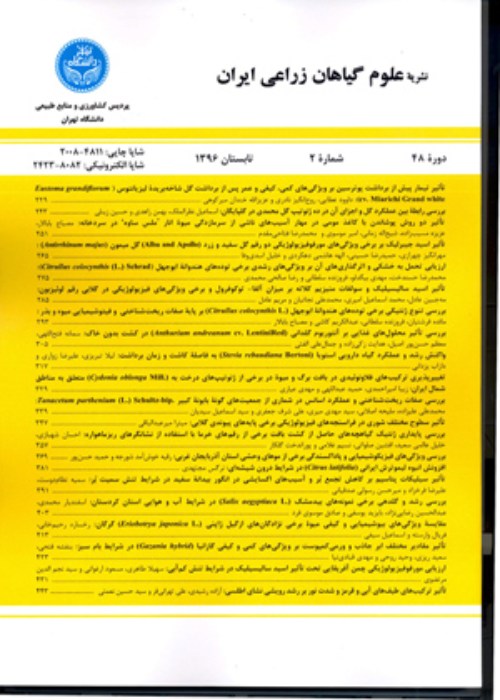The Rate and Duration of Grain Filling and Stem Reserve Remobilization in Wheat Cultivars as a Response to Water Deficit
Abstract:
Iran is widely drought prone, considering its semi-arid climate. Eleven wheat cultivars differing in yield potential and drought resistance were employed to determine the possible relationship among grain filling rate and duration, stem reserves remobilization and grain yield under either irrigated (IR) or non-irrigated (NIR) conditions at Gerizeh research station in Sanandaj for a duration of 3 years (2001 – 2003). A split plot design based on RCB of four replications in which water moisture regime (irrigated and non-irrigated conditions) was considered as main plot and cultivar as sub plot were employed in each experimental year. Mahdavi, Alvand and Roshan- Back cross appeared as high yield while Sabalan, Sardari, Agosta-Sefid as low yield cultivars under irrigation conditions. Meanwhile, Mahdavi and Alvand (the high yield cultivars) produced low yields and thus suffering from greater yield loss under NIR conditions. Sardari, Agosta-Sefid, Azar 2 and Sabalan exhibited low values of stress susceptibility index (SSI) and thus were considered as resistant cultivars whereas Alvand, Cross-Shahi and Mahdavi with high SSI as susceptible ones. Water stress decreased the rate of stem reserves remobilization but increased the efficiency of remobilization under NIR conditions. Water stress reduced grain filling rate. At an earlier stage, grain filling rate of resistant cultivars was higher than that of susceptible ones. Under NIR conditions, Agosta-Sefid (resistant cultivar) with the highest stem remobilization showed a highest value of grain filling rate during the 14 to 28 days after anthesis, whereas Cross-Shahi (susceptible cultivar) with lowest stem remobilization, showed a low value of grain filling rate during the foregoing growth stage. Water stress also reduced grain filling duration from 42 to 28 days. Under IR conditions, there was no relationship observed between grain yield, and grain filling rate and its duration. Under NIR conditions, resistant cultivars had a higher grain filing rate than the susceptible ones although the grain filling period was the same in either of the resistant and susceptible cultivars. Since Mahdavi cultivar benefitted from a higher mean yield than the other cultivars, thus it is proposed that this cultivar be cultivated in such cold areas as Kurdistan province
Language:
Persian
Published:
Iranian Journal of Field Crop Science, Volume:40 Issue: 1, 2009
Page:
181
magiran.com/p743615
دانلود و مطالعه متن این مقاله با یکی از روشهای زیر امکان پذیر است:
اشتراک شخصی
با عضویت و پرداخت آنلاین حق اشتراک یکساله به مبلغ 1,390,000ريال میتوانید 70 عنوان مطلب دانلود کنید!
اشتراک سازمانی
به کتابخانه دانشگاه یا محل کار خود پیشنهاد کنید تا اشتراک سازمانی این پایگاه را برای دسترسی نامحدود همه کاربران به متن مطالب تهیه نمایند!
توجه!
- حق عضویت دریافتی صرف حمایت از نشریات عضو و نگهداری، تکمیل و توسعه مگیران میشود.
- پرداخت حق اشتراک و دانلود مقالات اجازه بازنشر آن در سایر رسانههای چاپی و دیجیتال را به کاربر نمیدهد.
In order to view content subscription is required
Personal subscription
Subscribe magiran.com for 70 € euros via PayPal and download 70 articles during a year.
Organization subscription
Please contact us to subscribe your university or library for unlimited access!



